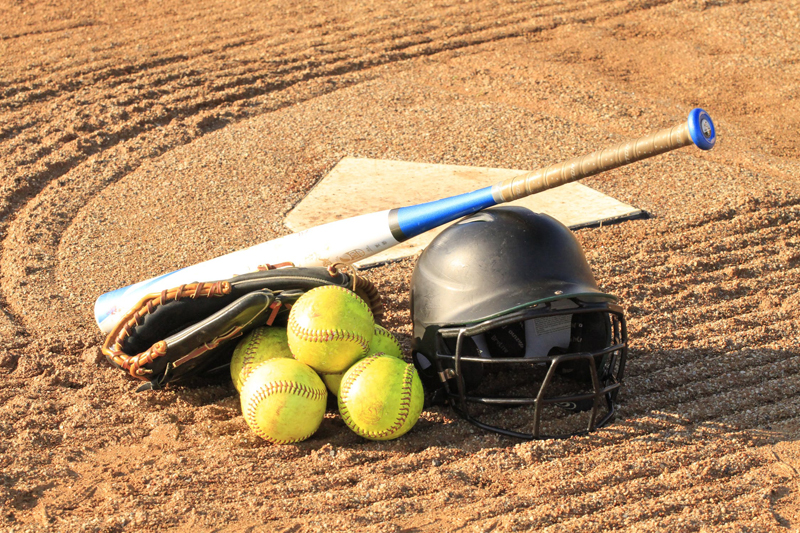The Infield Fly Rule

Coaches must understand the rules of the game to manage effectively. No rule demonstrates this principle more than the Infield Fly rule. Confusion here can cost a team a base runner or worse, the game, making parents grumbly and players frustrated. With a little knowledge and coaching, a pop fly situation in the infield will not turn bad.
The ASA Rulebook defines an Infield Fly as “a fair fly ball, not including a line drive or an attempted bunt which can be caught by an infielder, pitcher or catcher with ordinary effort when first and second or first, second and third are occupied with less than two outs.” (Rule 1, pages 21-22). It further states that the batter-runner is out “when an infield fly is declared. If the fair batted ball hits the batter-runner before reaching first base, the ball is dead and the infield fly is involved.” (Rule 8, Section 2.I).
Easy enough – if there is a force at third or a force at home with less than two outs and there is a pop up in the infield, the Infield Fly rule should be in effect. This means that the batter is automatically out, and the runners advance at their own risk. A runner has to tag up to advance on ANY caught fly ball, including when an Infield Fly is called. If the runner leaves the base before the ball is caught, the fielder can throw the ball to the base the runner left and she will be out.
Be aware, though. Pandemonium usually erupts if the infielder drops the ball. Runners not aware of the situation will run when they see the ball hit the ground because they think they are forced. With an Infield Fly called, the batter is out and the runners are not forced so they should usually return to their bag and stay put. I definitely recommend covering the Infield Fly a couple of times in practice so that base runners will know what not to do.
The umpire will make a judgment when the ball is at or near the top of its flight on whether an Infield Fly should be called. If the Infield Fly rule is invoked, then the home plate umpire will raise his/her right hand up in the air and point. Some umpires will shout “Infield Fly!!” and signal with their hand, while others will only signal with their hand. Talk to the umpire before the game to see which way they prefer. Also, instead of watching the runners or the fly ball in an Infield Fly situation, train yourself to watch the umpire, or have one of your assistants watch the umpire. Whether the umpire verbalizes the call or not, his right hand in the air will tell you and your players how to react to the situation.
The ASA Rulebook defines an Infield Fly as “a fair fly ball, not including a line drive or an attempted bunt which can be caught by an infielder, pitcher or catcher with ordinary effort when first and second or first, second and third are occupied with less than two outs.” (Rule 1, pages 21-22). It further states that the batter-runner is out “when an infield fly is declared. If the fair batted ball hits the batter-runner before reaching first base, the ball is dead and the infield fly is involved.” (Rule 8, Section 2.I).
Easy enough – if there is a force at third or a force at home with less than two outs and there is a pop up in the infield, the Infield Fly rule should be in effect. This means that the batter is automatically out, and the runners advance at their own risk. A runner has to tag up to advance on ANY caught fly ball, including when an Infield Fly is called. If the runner leaves the base before the ball is caught, the fielder can throw the ball to the base the runner left and she will be out.
Be aware, though. Pandemonium usually erupts if the infielder drops the ball. Runners not aware of the situation will run when they see the ball hit the ground because they think they are forced. With an Infield Fly called, the batter is out and the runners are not forced so they should usually return to their bag and stay put. I definitely recommend covering the Infield Fly a couple of times in practice so that base runners will know what not to do.
The umpire will make a judgment when the ball is at or near the top of its flight on whether an Infield Fly should be called. If the Infield Fly rule is invoked, then the home plate umpire will raise his/her right hand up in the air and point. Some umpires will shout “Infield Fly!!” and signal with their hand, while others will only signal with their hand. Talk to the umpire before the game to see which way they prefer. Also, instead of watching the runners or the fly ball in an Infield Fly situation, train yourself to watch the umpire, or have one of your assistants watch the umpire. Whether the umpire verbalizes the call or not, his right hand in the air will tell you and your players how to react to the situation.
BellaOnline Softball Subject List: Coach´s Box, Health & Medical, History of Softball, International Softball, Organizations, Parents , Professional Softball, Reviews, Rules & Regulations, Scorekeeping, Stats & Analysis, Travel Ball |
This site needs an editor - click to learn more!
You Should Also Read:
The Dropped Third Strike in Softball
Related Articles
Editor's Picks Articles
Top Ten Articles
Previous Features
Site Map
Content copyright © 2023 by Don McKay. All rights reserved.
This content was written by Don McKay. If you wish to use this content in any manner, you need written permission. Contact
BellaOnline Administration
for details.


